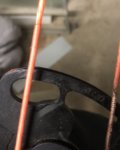Hi archers
I’m a little confused with tuning a bow. There’s paper tuning and broadhead tuning and a few others. I’ll just stick to these 2 unless there are better options.
But if I paper tune and get that shooting correct but then have to broadhead tune to get my target points and broadheads to group together is that not making the bow not tuned. Because I am altering from the paper tune.
shootin a Hoyt pro defiant 70
29in arrows with 125gr heads
I’m a little confused with tuning a bow. There’s paper tuning and broadhead tuning and a few others. I’ll just stick to these 2 unless there are better options.
But if I paper tune and get that shooting correct but then have to broadhead tune to get my target points and broadheads to group together is that not making the bow not tuned. Because I am altering from the paper tune.
shootin a Hoyt pro defiant 70
29in arrows with 125gr heads


